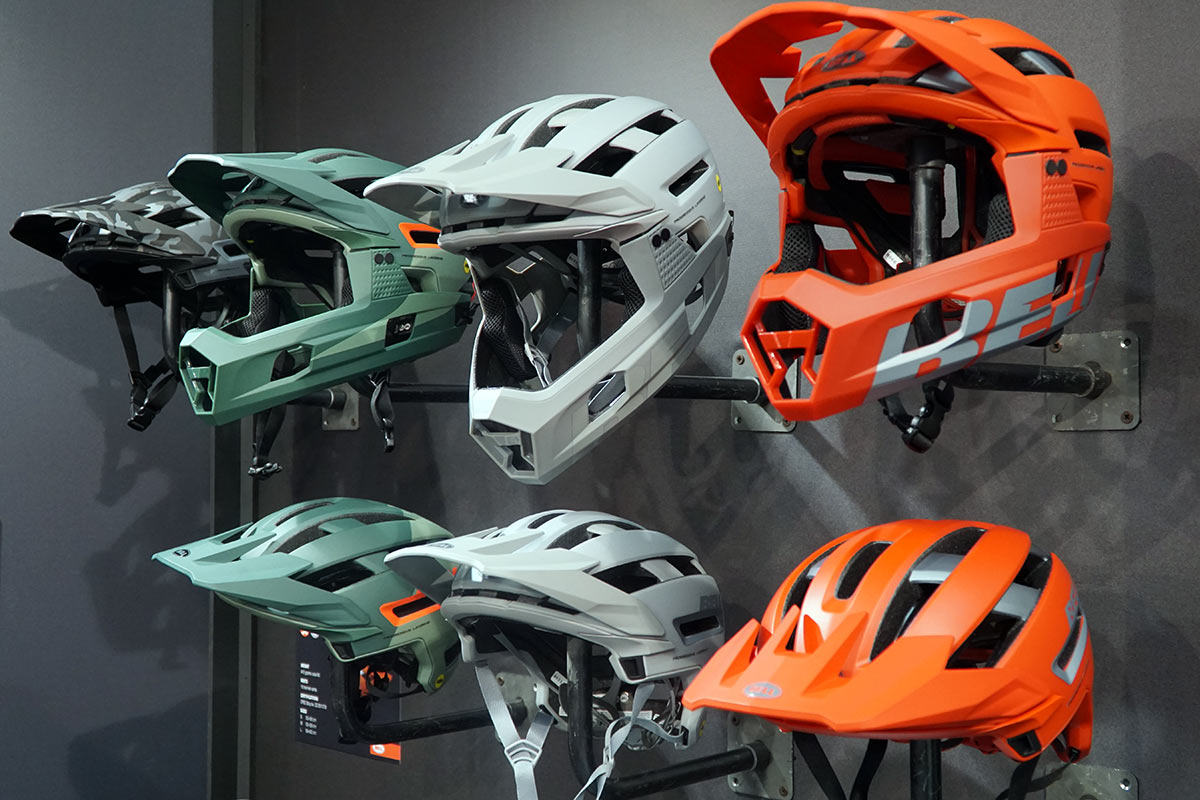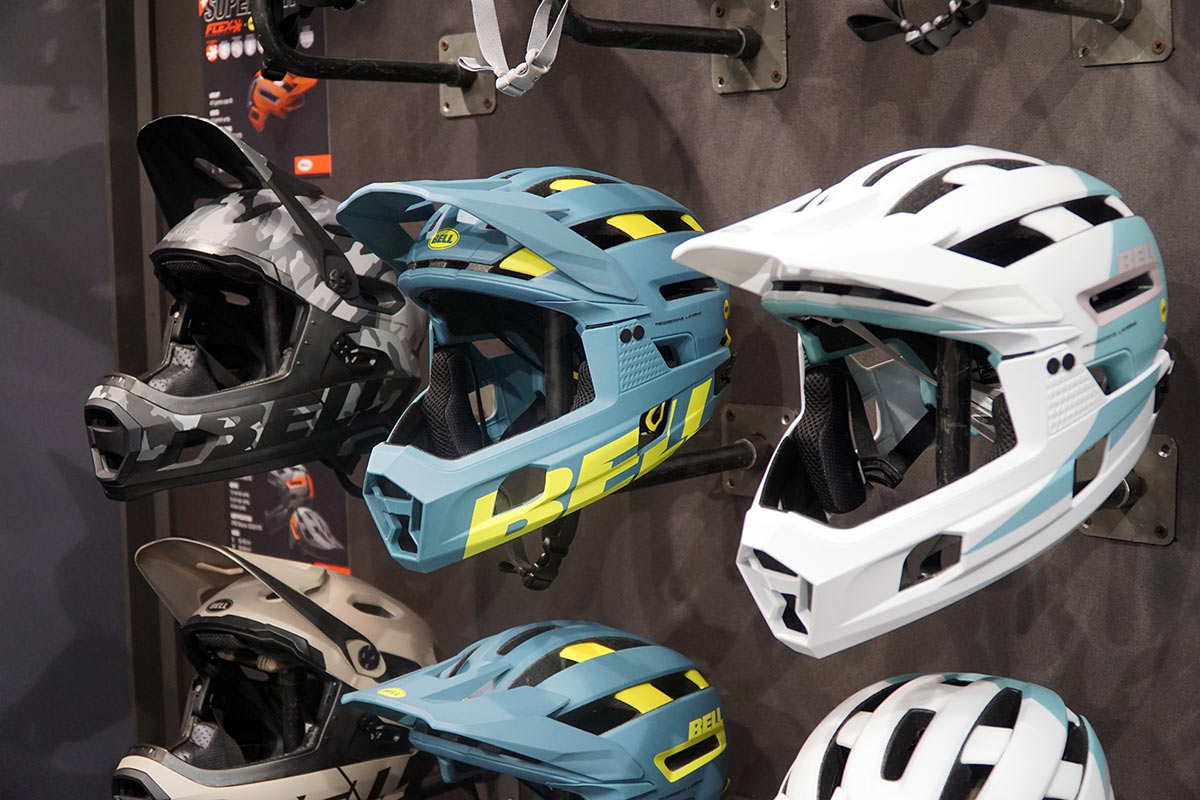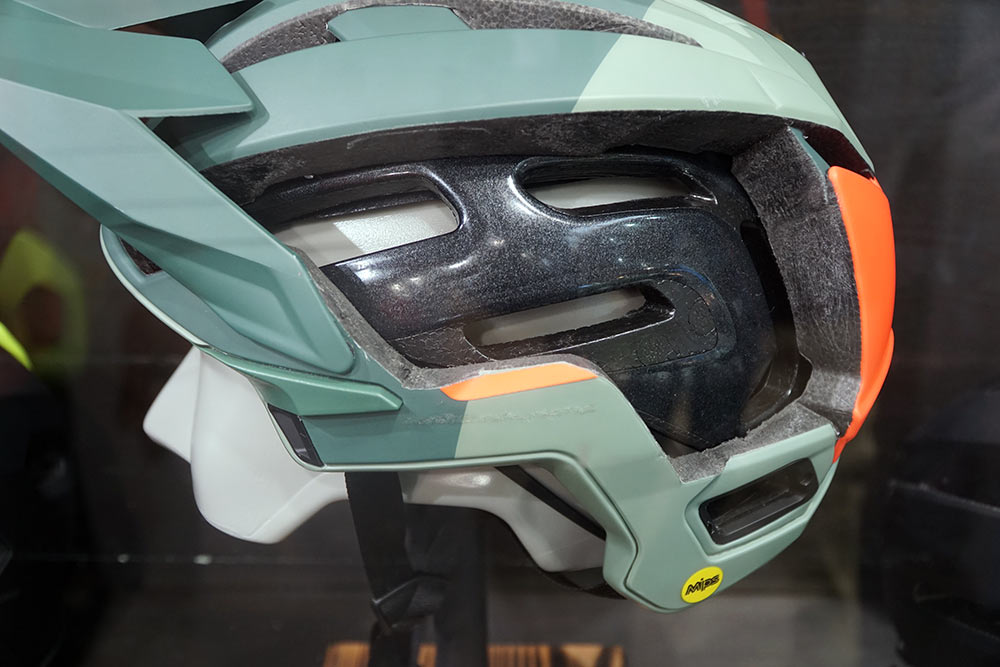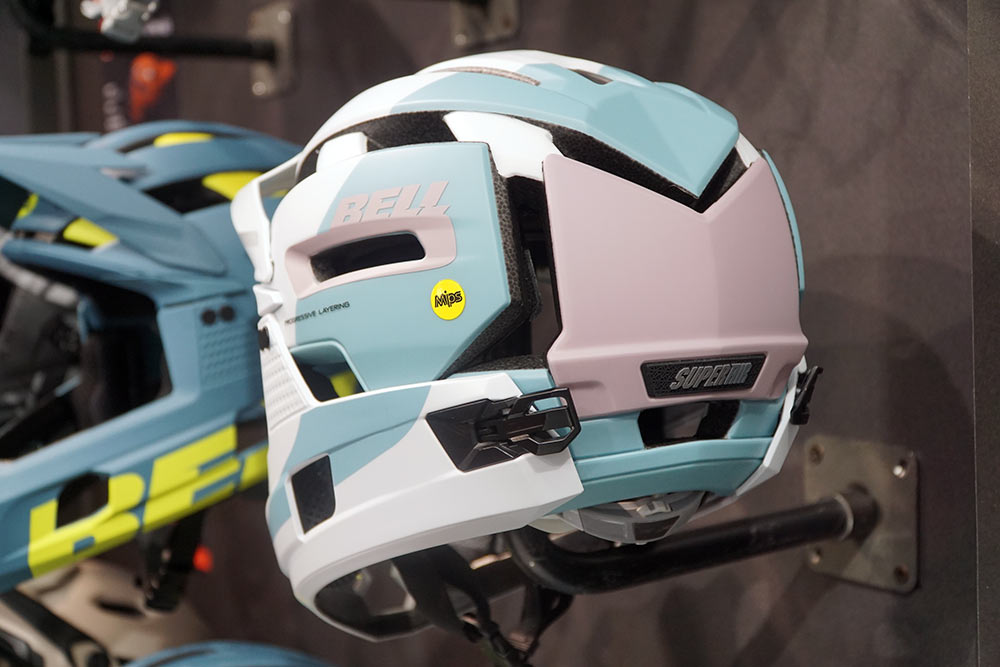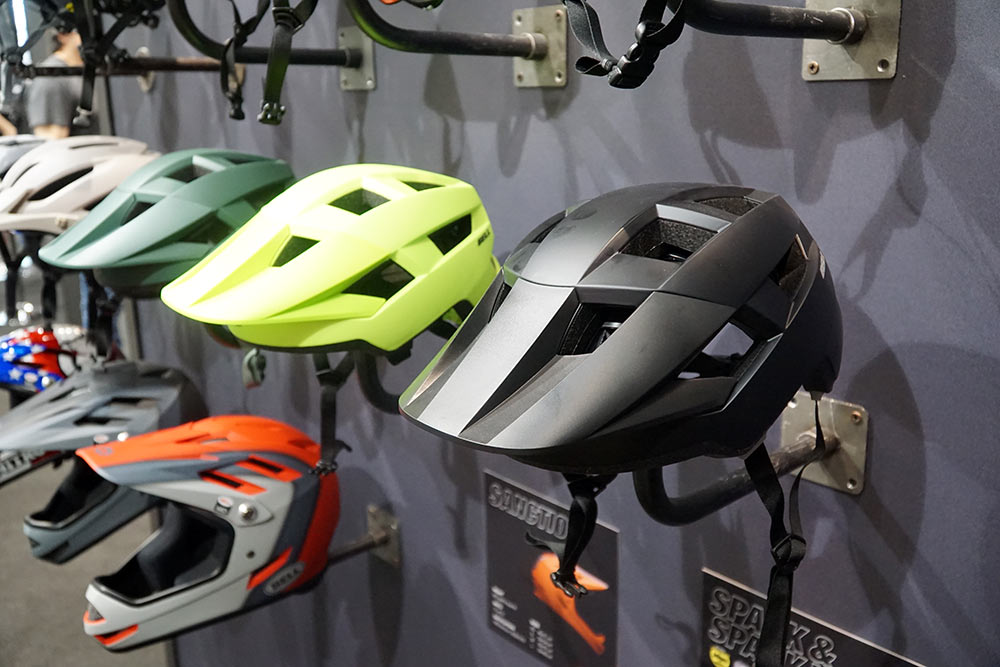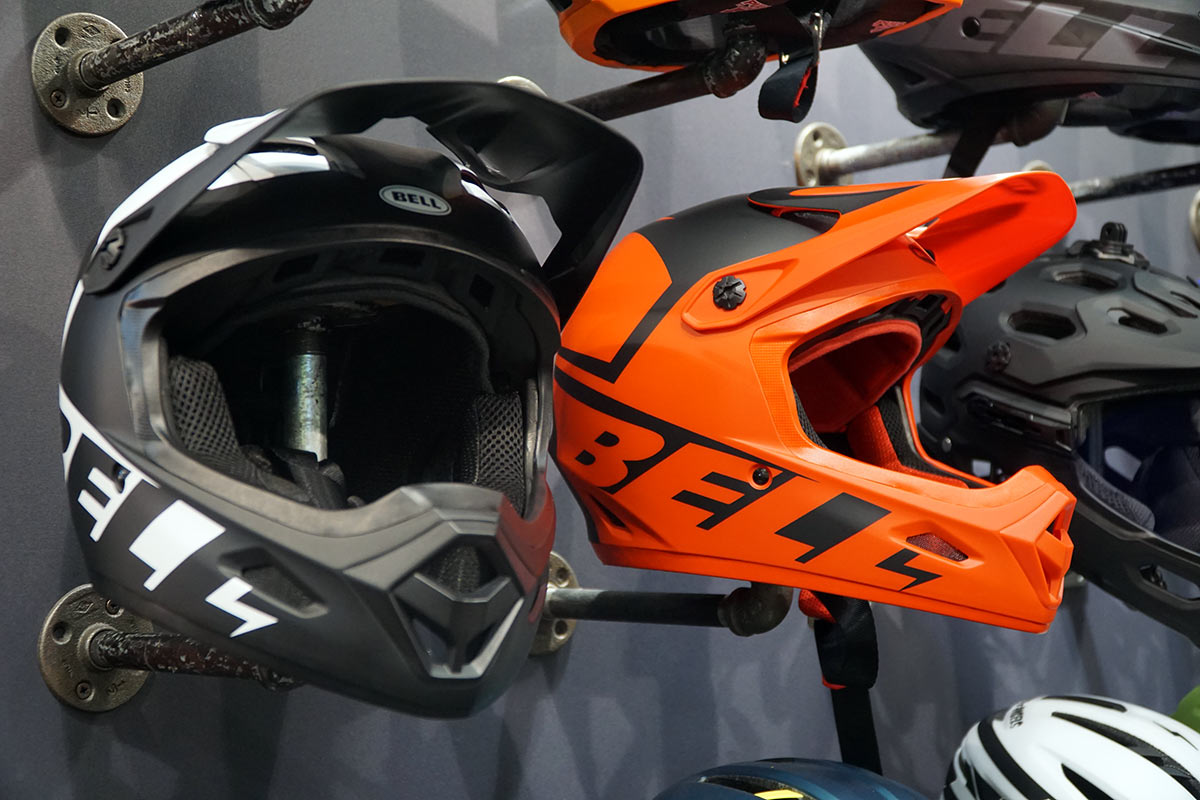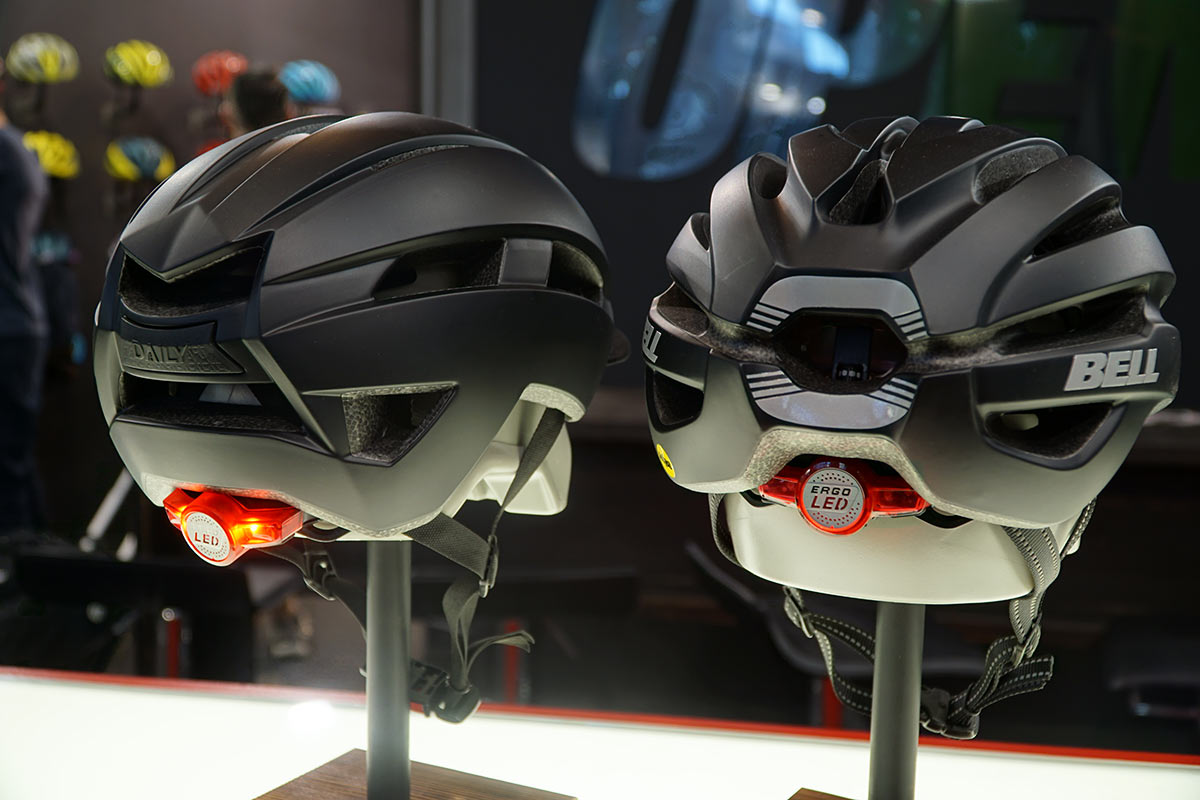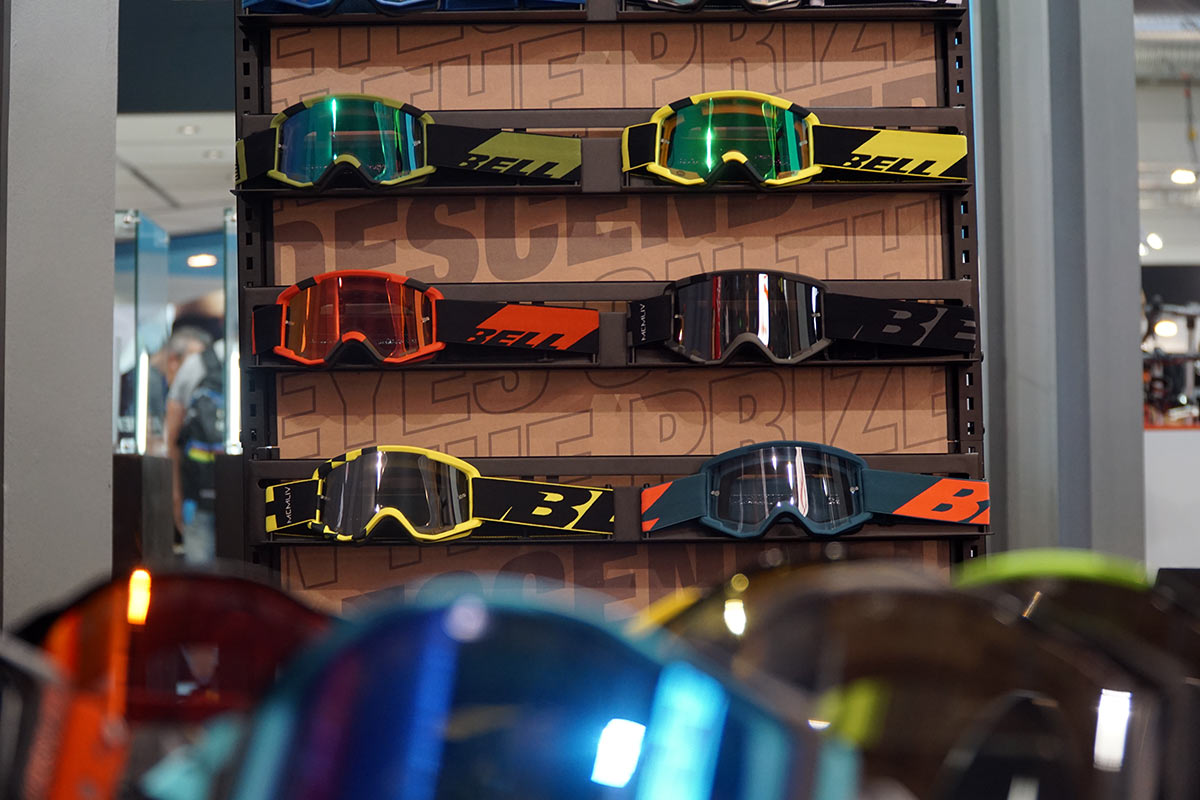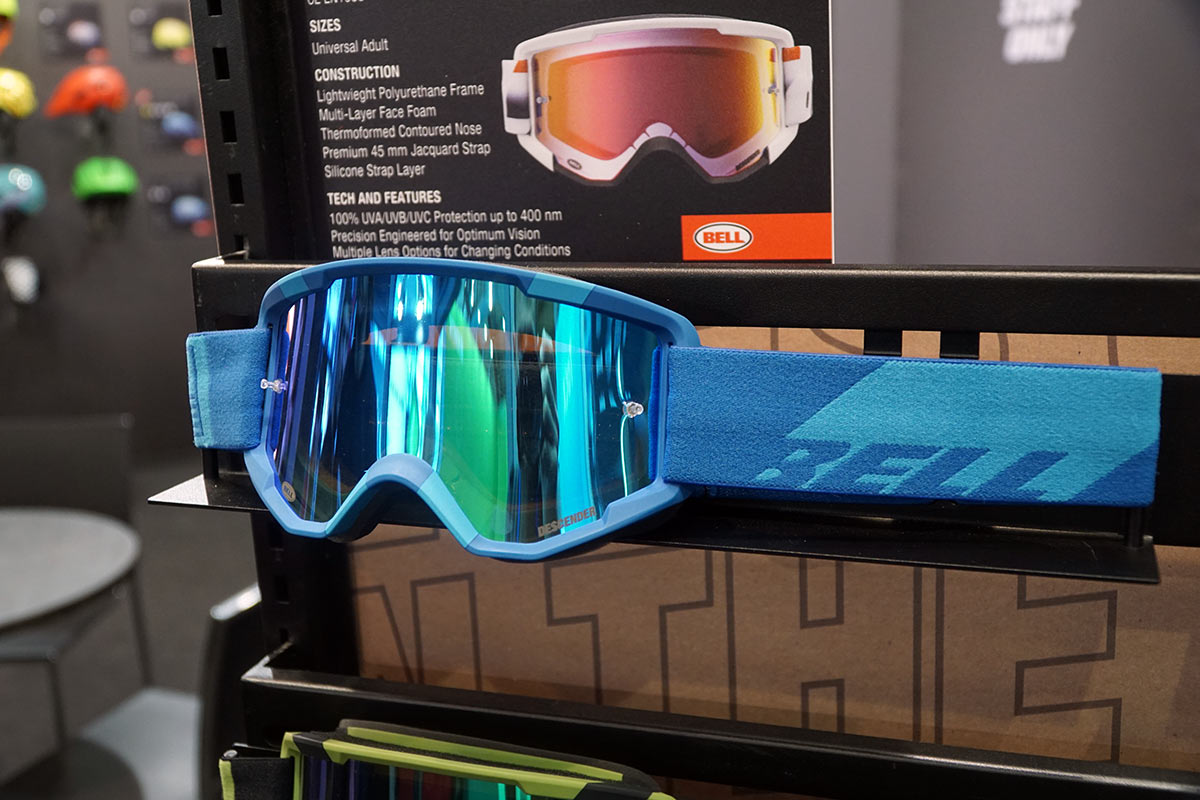Bell has a long history of pushing the development boundaries in helmet design. And while they (perhaps too) quietly introduced Spherical MIPS a couple years ago, they plan on making a little noise in 2020. To kick it off, they’re stretching their research and design muscles with the new Super Air R and Sixer. Oh, and they’re launching goggles. And not just goggles for the sake of goggles, but an entirely new technology that (they say) will change the game for goggles. And prices. But let’s start with the new helmets…
The new 2020 Bell Super Air R drops a whopping 144g from the prior version, and upgrades the design in the process. And it does this without skimping on any safety features, passing CPSC Bicycle and CE EN1078 test standards.
Inside is their new Flex Spherical + MIPS technology that uses an EPP (expanded polypropylene) inner shell inside the EPS outer shell, each coated with Teflon so they slide smoothly. Called Progressive Layering, it offers wraparound protection and good ventilation. The latter benefits from 18 helmet vents, 8 chin bar vents, and 4 brow ports. Throw in an integrated breakaway camera mount, X-static padding, goggle guide, and adjustable visor and you have a heckuva helmet for all-mountain and enduro riders.
The chin bar attaches with a simple two-click system, but keeps the full wrap-around design that adds a lot more stability to the system than chinbars that only snap into the front. Claimed weight is 640g for size medium (also available in Small and Large sizes), retail is $275.
Want it without the chin bar? That would be the Super Air, which comes in at a claimed 410g and $225. That’s 10% lighter than the new Sixer shown below. So, how much protection does that chin bar provide? Technically, none that’s rated. It’s a “skid plate for your face” as they put it. But, they also said that some of the pre-production samples did pass the DH tests, but they’re not marketing it as such. And you shouldn’t use this for DH or expect that level of protection out of it. We’re testing that now, look for our ride report soon.
More new Bell mountain bike helmets
With a claimed weight of 389g, the new Spark isn’t light, but it’s comfortable…and very affordable. We’ve been riding one for a couple months and it’s comfortable and fits really well. It’s offered in “One Size Fits Most” (plus a bigger XL for really large heads) by using an adjustable fit system. What’s incredible is the features they were able to pack into it for $70 (€80).
Affordable and safe, the new Transfer Full Face is it a great full face helmet for someone who only uses a full face occasionally but doesn’t want to rent one that others have worn when they had to the bike parks.
Not shown, the Full 9 Fusion steps down a bit from their top level. To save coin, they went with snap-on cheek pads rather than magnetic and a fiberglass composite shell instead of carbon fiber.
The new Sidetrack II is a youth helmet with integrated MIPS, sweat guide and removeable visor, plus two shell sizes to fit the smallest toddlers that are likely to be in a bike seat or trailer, up to early riders. And it looks pro, just like mom and dad’s helmet.
The Daily (left) and Avenue are two existing commuter/city helmets, but now they get integrated LED rear lights on the retention mechanism.
Bell Descender Goggle
Up until now, Bell has focused solely on helmets. But as a “protection” brand, that’s leaving a lot on the table. They won’t say where else this might take them in the future, but for sure they’re dropping down a bit to protect more of your face.
The Descender goggle was purpose built for mountain biking, not a cross over from moto. So it’s super lightweight, and it uses a triple-layer foam surround that’s super soft to remain comfortable and prevent any obstruction of your nasal breathing passages. A lighter foam layer covers the vent holes to keep it breathable.
Retail is $49.95 (€54,95) for each of the four mirrored lens colors, which are paired with 12 colorways that’ll match all their helmets…but not so color matched that they won’t work with other helmet brands’ colors, too. And it’s just €/$39.95 for clear lenses.
These are near-production level, you’ll see a few tweaks to the final feature set when they go on sale at the end of this year. Full specs aren’t announced, but they’ll have 45mm silicone-backed straps, a thermo-formed nose shape, and 100% UVA/B/C protection.
The really exciting stuff is coming later, including a lens technology they’re calling Reflex. That’s it in the foreground it the first goggle photo, but that’s all we can show you for now…
Switching roads?
Looking forward, we’ll probably see some big development energy in the road segment, too. Why? Because, by sales data and category sales, road is their weakest cycling segment, and they aim to change that. And they’ve teased some really, really interesting things that they categorize as “ridiculous”. As in, there’s good, better, best… and then ridiculous. But we probably won’t see the first of it until mid- to late-2020, then more in 2021 and 2022. Yep, they have a long roadmap.
